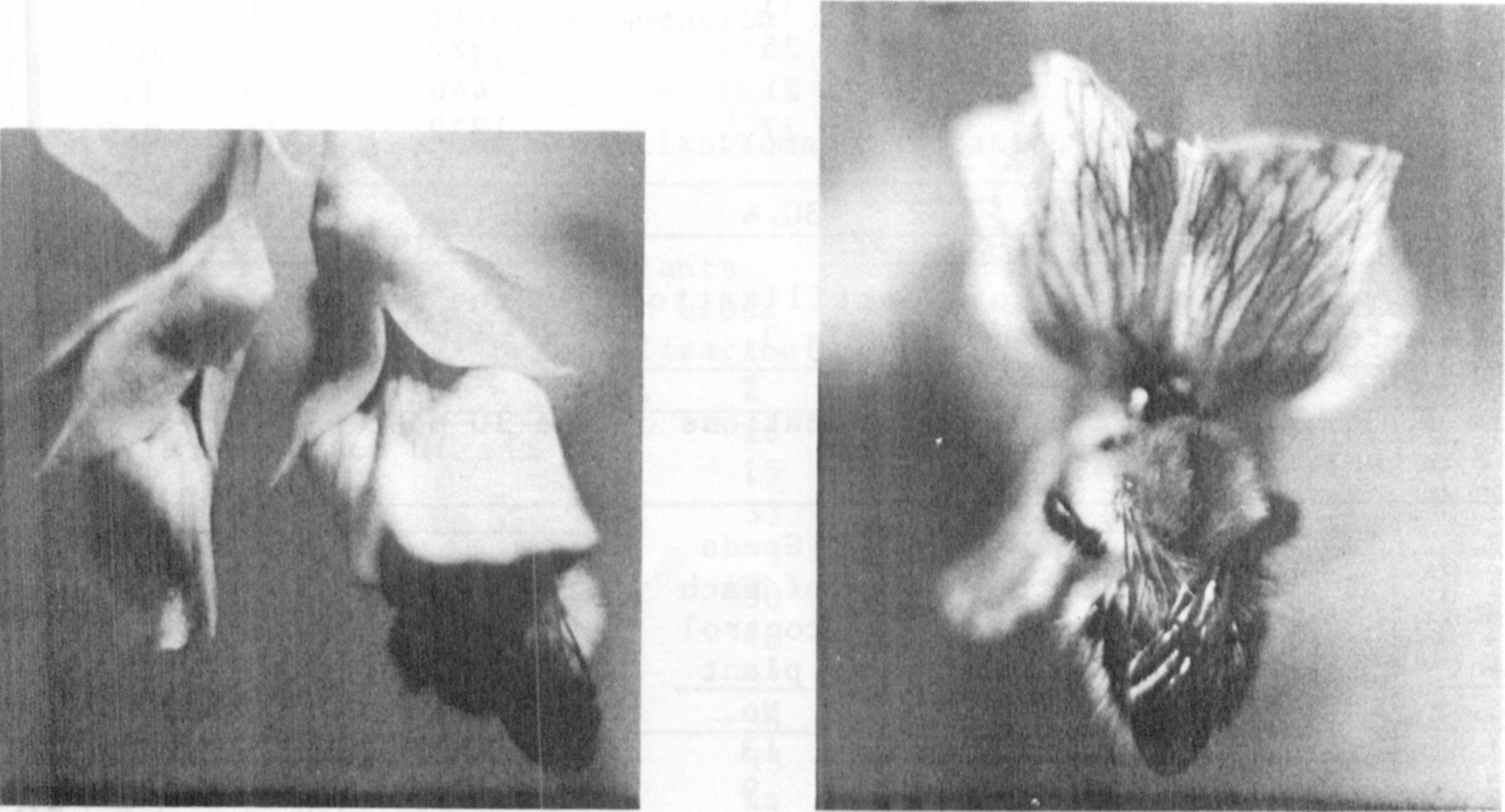38 PNL Volume 16 1984
RESEARCH REPORTS
CROSS FERTILIZATION IN PEAS UNDER DIFFERENT ECOLOGICAL CONDITIONS
Loennig, W.-E. Institute of Genetics, University of Bonn
Federal Republic of Germany
A simple method to determine the frequency of cross fertilizations
occurring in cultivated peas recently was described (1). The work has
been continued with WL 6040 which has green cotyledons (gene i) and is
linearly fasciated. Table 1 shows ten and Table 2 eleven control groups
of this line on two ecologically different fields (locations I and II).
Location II has a richer insect fauna than location 1. The control
groups were distributed among 20,000 plants with the dominant allele
(gene I, yellow cotyledons) on location I and about 7,000 plants with
this allele on location II.

The tables show that nearly one third of all plants bear one or
more cross fertilizations. In comparison with the data from location 1
( = 100%), the number of seeds arising from cross pollinations was 59.13%
higher on location II (non-rounded numbers as basis). Unexpectedly, the
percentage of contaminated plants was only slightly higher on location
II (+ 1.29%). I have not yet found a satisfactory explanation for this.


